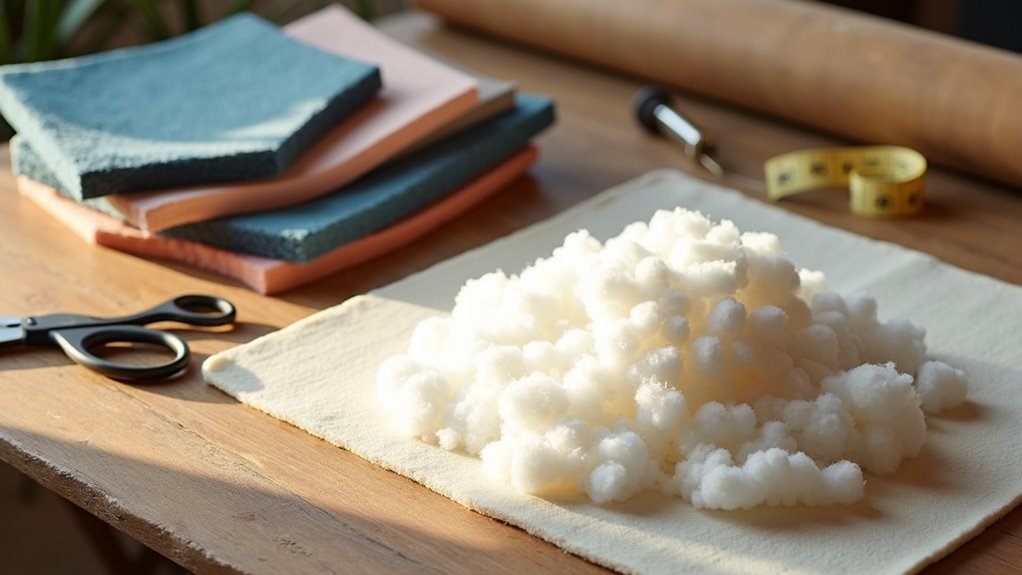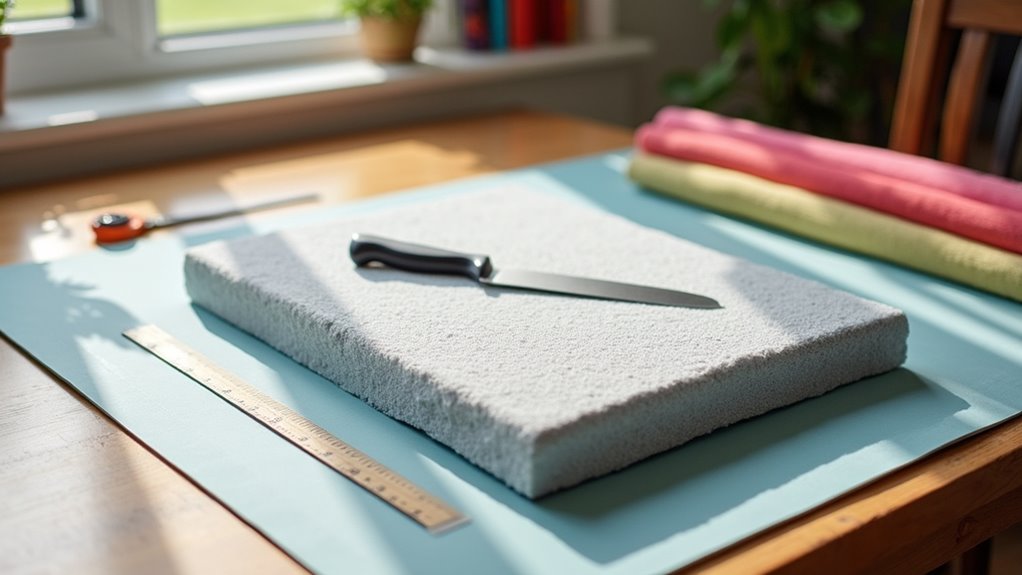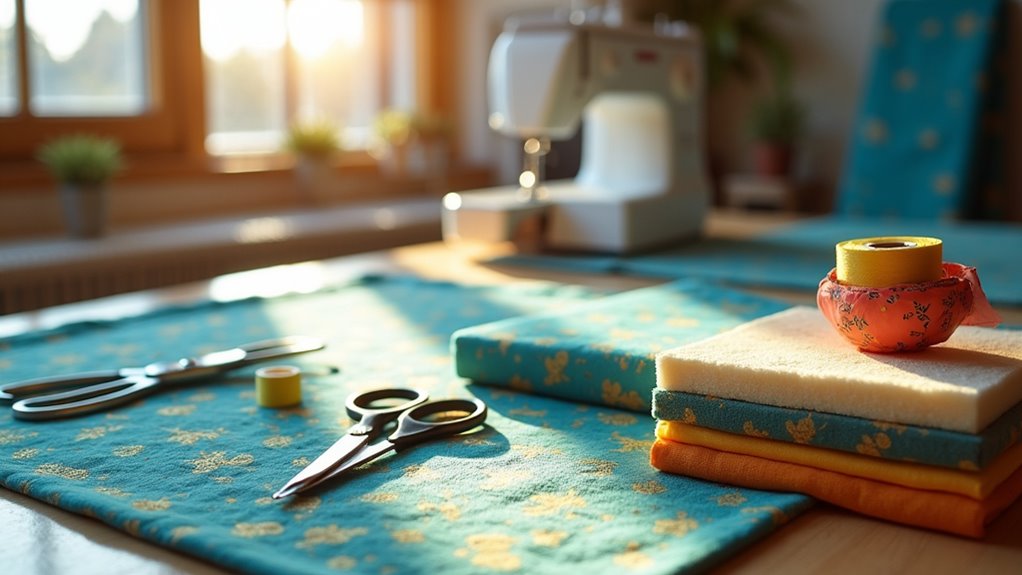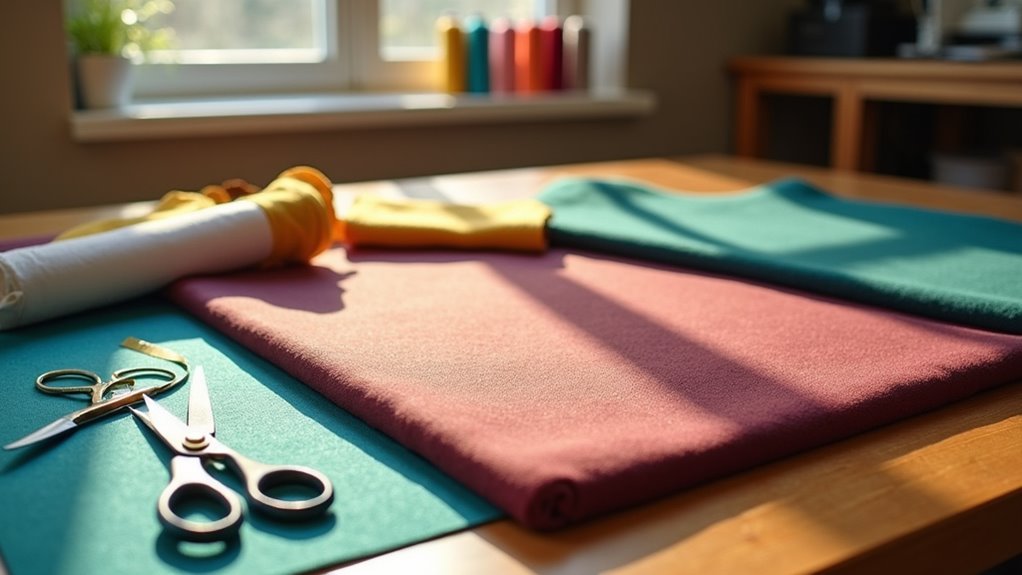How to Make a Chair Pad
This post contains affiliate links. As an Amazon Associate, we earn from qualifying purchases.
Making your own chair pad is a fun and straightforward project that allows you to customize comfort and style. Start by choosing a durable fabric, like polyester or cozy cotton, and select the right foam for your needs—high-density foam offers excellent support, while memory foam provides a hugging feel. After measuring your chair for the perfect fit, cut both the foam and fabric, then sew the edges, leaving one side open for stuffing. You can also enhance the design with various colors and patterns. For those interested in more detailed steps and tips, continue reading for further insights!
Essential Facts in 30 Seconds
- Choose durable fabric like polyester or leather for comfort and longevity.
- Select cushion stuffing such as high-density foam for support or polyester fill for outdoor use.
- Measure the chair accurately and cut foam to the desired thickness with clean edges.
- Sew fabric pieces with a ¾ inch seam allowance, leaving one side open for filling; consider adding decorative ties.
- Coordinate colors and patterns with room decor, ensuring easy maintenance and stain resistance.
Choosing the Right Fabric Material
Choosing the right fabric for your chair pad is important. Start with durability. Polyester is strong and resists fading. It works well indoors and outdoors. Leather and PVC are also excellent options for heavy-duty applications due to their resistance to wear. Additionally, consider fabrics with durable characteristics that can withstand everyday use and maintain their appearance over time. Regular cleaning techniques can help prolong the life of your chosen fabric. Remember that using durable fabric can significantly enhance the lifespan of your chair pad.
For a soft feel, cotton is great but can stain easily.
Next, think about how it looks. Linen adds elegance to any space. Leather gives a high-end touch but needs care to stay nice.
For a budget-friendly option, PU looks like leather without the high price.
Match the fabric to your style and needs. Got a stain? No worries! With the right care, you can fix it easily.
Enjoy your crafting!
Selecting Cushion Stuffing Materials

Cushion stuffing materials can truly change your chair pads! Focus on comfort and long-lasting use. High-density polyurethane foam is firm and won’t sag. It’s great for chairs that see a lot of action. Additionally, high-density foam is ideal for daily use, providing excellent support and durability. To create a well-rounded cushion, consider the importance of measuring for a perfect fit. Remember that the sewing process is essential for achieving a durable and attractive finish. Using batting for cushioning can enhance the comfort of your chair pad.
Memory foam is another option. It shapes to your body and feels cozy.
For a lighter choice, hollow fiber works well too. It’s hypoallergenic and easy on your wallet.
For outdoor cushions, polyester fill is the way to go. It drains water quickly and resists mildew. Enjoy your backyard without worrying about wet cushions!
Mixing materials can also help. Combine foam and clustered polyfill for support and softness. A comfy chair pad balances these elements.
Experiment with different options to find what’s best! Let’s make your chair the comfiest one around!
Understanding Foam Grades and Density
Finding the right foam for chair pads is important for comfort. Foam comes in different grades and densities. Each type has unique properties. Here’s a simple guide to help you choose:
- Low-Density Foam (1.5 – 2.5 lb/ft³): This foam is soft and comfy. It works well for pillows. However, it may not last long.
- Medium-Density Foam (2.5 – 3.5 lb/ft³): This foam strikes a good balance. It offers both comfort and support. It’s a great choice for dining chair pads. Medium density foam provides essential cushioning while ensuring durability, making it ideal for everyday use.
- High-Density Foam (>3.5 lb/ft³): This foam is firm and very durable. It’s perfect for heavy use, like in car seats.
Higher density foam lasts longer. But comfort is also key. For cozy chair pads, medium density usually works best.
Enjoy making your chair pads!
Determining Foam Thickness and Cut

Choosing the right foam for your chair pad is important for comfort.
Thicker foam provides better support for long sittings. Thinner foam is fine for quick meals.
Start by measuring your chair. This helps you know the right size to cut.
Use sharp scissors or an electric knife for clean edges. Extra foam adds softness, making your chair feel like a cozy cloud.
Enjoy your new chair pad!
Choosing Foam Thickness
Choosing the right foam thickness for your chair pad is important for comfort. Here are three key tips to help you decide:
- Use Frequency: For daily use, choose thicker foam. Around 4 inches provides good support.
- Density Matters: High-density foam can be thinner but still supportive. A firmer option can feel great.
- Chair Type: Dining chairs need foam between 50 mm and 75 mm. Sofas require thicker foam, from 75 mm to 125 mm, for lounging comfort.
Additionally, selecting the right foam padding will enhance your overall seating experience. These tips will help you find the best foam for your needs. Enjoy your comfortable chair!
Custom Foam Cutting
Custom foam cutting makes it easy to create the perfect chair pad just for you!
Choose die cutting for sharp shapes or waterjet cutting for detailed designs. No heat damage occurs with waterjet cutting. CNC cutting offers precision for custom shapes and contours. Replacing worn foam can significantly improve the comfort of your chair pad. Additionally, using new fabric can enhance the overall aesthetic of your chair pad.
Start by measuring your foam. Trace your desired shape, leaving extra space for padding.
Keep your blades sharp for clean cuts. Hold them straight for smooth edges.
Got a ketchup stain? Clean it up quickly! Test the fit and trim as needed. Remember, replacing damaged foam will enhance comfort and longevity.
You’ll enjoy a comfy chair pad in no time!
Sewing and Assembly Techniques

Ready to dive into sewing and assembly techniques for your chair pad? These steps will help you create a beautiful piece.
- Cut Your Fabric: Trace your durable pattern around the chair shape. Remember the ¾ inch seam allowance. It gives your fabric a snug fit! Make sure to measure your fabric accurately to ensure the best fit for your chair. Choosing the right fabric can also enhance the overall look of your chair pad.
- Sewing the Cover: Sew three sides of your fabric pieces together, right sides facing. Leave one side open. Use backstitching for strong seams. A sturdy seam is important! This will ensure your chair pad can withstand daily use.
- Finishing Touches: Add ties and piping for style. Make sure to sew those ties tightly. They need to hold strong when you tie them. When you’re done, consider adding filling materials for extra comfort in your chair pad. Using decorative elements can also personalize your chair pad to match your decor.
Follow these sewing steps and assembly tips. Soon, you’ll have a comfy chair pad that looks fantastic!
Let your creativity shine!
Design and Customization Considerations

Making a chair pad can be fun and easy. Start with colors and patterns that show your style. Pick a shape that fits your chair well. This helps the pad look good and feel comfy.
Materials matter too. Choose a fabric that feels nice. It should also be strong enough for everyday use. A fun fabric can hide spills and wear. Consider using durable fabric to ensure the pad withstands daily wear and enhances its longevity. Selecting the right seat cushion firmness can further improve comfort.
Think about how you’ll use the chair pad. Will it be in a busy kitchen or a quiet office? This can help you decide on the best materials. Incorporating foam padding provides extra support and comfort for long periods of sitting.
A great chair pad adds comfort and style to any space. It makes your chair inviting and cozy. Enjoy the process of making it yours!
Color and Pattern Selection
The right colors and patterns for your chair pads can change your space completely. Color affects your mood. Warm colors make you feel cozy. Cool colors help you relax.
Here are three easy tips to guide you:
- Coordinate: Match your chair pads with your room’s main colors. Think about your rugs and walls.
- Pattern Mix: Mix patterns carefully. Pair bold patterns with solid colors for balance.
- Practicality: Choose darker colors or patterns. They hide stains well. Spilled ketchup? No problem!
Use these tips to create a stylish and comfortable vibe!
Shape and Fit Options
Finding the right shape and fit for chair pads boosts comfort and style.
Start by considering the shape. Square or rectangular pads work well for standard chairs. Round or trapezoid shapes fit unique designs perfectly. Measure your chairs carefully. Accurate measurements help avoid slips. Nobody wants cushions that slide around.
For unique chairs, customize the shape to get a snug fit. Edge styles also matter. Waterfall edges feel soft and smooth. Boxed edges give a sharper look.
With the right shape and fit, your chairs will be both comfortable and stylish!
Custom Material Choices
Customizing your chair pad adds comfort and style. The right materials can make your pad a cozy masterpiece.
Consider these great options:
- Natural fibers like cotton and linen offer softness and breathability. They work well indoors and provide a comfortable surface for long periods of sitting. Additionally, using durable fabric can enhance the longevity of your chair pad.
- Synthetic materials provide water and UV resistance. They’re perfect for outdoor use and easy to clean.
- Filling matters too! Foam layered with polyester batting gives softness and support.
Select materials that fit your needs. Additionally, recovering chair cushions can extend the life of your furniture and enhance your design choices.
Make your chair pad a reflection of your style. Enjoy your cozy creation!
Frequently Asked Questions
What Tools Do I Need to Make a Chair Pad?
To make a chair pad, gather some materials. Start with fabric, like cotton or upholstery. Choose padding, such as foam or batting, for comfort. Essential tools include scissors, a staple gun, and a sewing machine for assembly.
Cut the fabric into the desired shape and size. Use the padding to add comfort. Attach the padding to the fabric with a staple gun. Sew the edges for a neat finish.
Making a chair pad is fun and easy. It adds style and comfort to your chair. Enjoy your new chair pad!
How Long Does It Take to Create a Chair Pad?
Time flies when you’re busy! Making a chair pad usually takes about 1 to 2 hours. This time can change based on how complicated the design is and your skill level.
Simple projects take less time. If you have experience, you might finish faster. A good plan helps you stay on track. Gather your materials first. This makes the process smoother.
Can I Repair a Damaged Chair Pad?
Repairing a damaged chair pad is possible and can be done easily. Start by gathering materials like upholstery fabric and batting. These items will help restore comfort and improve the look of your chair.
First, remove the old padding. Cut the new batting to fit the chair pad. Next, cover it with the upholstery fabric. Use a staple gun to secure the fabric tightly. Trim any excess fabric for a clean edge.
This simple process can extend the life of your chair. Enjoy a comfortable seat once again!
How Do I Clean and Maintain My Chair Pad?
Your chair pad needs care and attention. Treat it like a special part of your home. Clean it regularly to keep it fresh. Use a gentle vacuum to remove dust and crumbs. Spot clean any stains right away.
Fluff your chair pad often. This keeps it looking nice and helps it last longer. Avoid harsh chemicals when cleaning. A mild soap and water solution works well. Let it air dry completely before using it again.
With these simple steps, your chair pad will stay lively and inviting. Enjoy your comfy seating!
Where Can I Buy Materials for Making Chair Pads?
You can find materials for making chair pads at local fabric stores and online shops. Look for foam, fabric, and other supplies. Many stores offer a variety of colors and patterns. Compare prices to get the best deals. Check craft stores for additional options. Some stores have special sections for upholstery materials. Don’t forget to consider the thickness of the foam for comfort. Make sure to choose durable fabrics that can withstand wear and tear. With the right materials, your chair pads will look great and feel comfortable.
Conclusion
Making your own chair pad is a fun project. It adds comfort and style to your space. Choose soft fabrics for a cozy feel. Bright colors or fun patterns can make your chair stand out. Gather your supplies like fabric, stuffing, and thread. Cut the fabric to fit your chair. Sew the edges together and fill it with stuffing. Tie off the ends securely. Soon, your chair will be the most inviting spot in your home. Enjoy your new creation!
